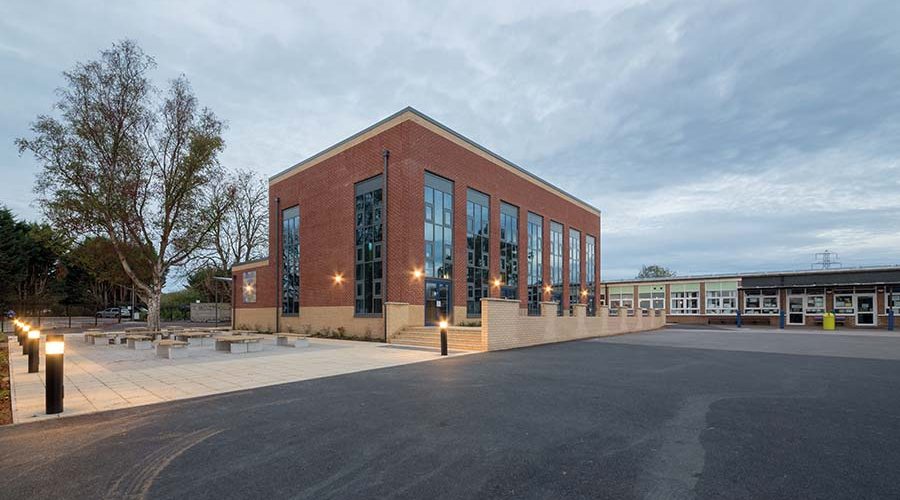Daniel West, Project Director at West & West, explains the importance of strong partnerships when delivering M&E solutions for educational facilities and the potential for greater efficiencies.
West & West
Mechanical and electrical (M&E) solutions play a fundamental role in improving learning environments, but the most effective stem from successful partnerships. Positive working relationships forged at the beginning of a project can ensure building services are more accurately designed for an educational building, whether that’s a new build or refurbishment. As the project continues, collaboration can also ease installation and result in more efficiencies both in the short and long term.
Tailored and workable designs
M&E solutions take time to design effectively so this is one of the key areas where a good partnership will reap benefits for the client and end-user. Initial concepts will need to be developed and refined to ensure they meet the client’s brief and all compliance requirements. In many cases, this will require M&E contractors to work closely with several different members of a project team from the outset, including architects.
This approach will ensure that very specific details can be incorporated into the final solution and that building services are properly co-ordinated. This is particularly important for historic educational buildings where there are often more restrictions in terms of where and how modern services can be installed to ensure the property’s fabric is protected.
At Eton College, for example, we worked in partnership with the architect to develop a concept electrical design into a very detailed solution for a new visitor entrance and the restoration of the college’s ‘New Schools’ building. This had to meet a number of exacting requirements including specific types of light fittings, which all had to be installed at a set height. The location of cables, conduits and accessories also had to be agreed prior to installation.
Our approach ensured the electrical design could meet the architect’s aesthetic requirements and enabled us to highlight any potential issues from an early stage, ensuring we could develop a workable solution for the client.
Minimal disruption
Installing M&E solutions into educational facilities usually requires contractors to work in live environments. This is why flexibility is so important. To ensure students and teaching staff are kept safe, the installation must be very carefully co-ordinated. This relies on good communication with staff, including regular meetings, and, for many projects, a considerable amount of out-of-hours work to ensure any potential disruption is minimised.
Fit-for-purpose building control
Maximising energy efficiency is a priority for all educational facilities, and this aim goes hand-in-hand with the installation of building management systems. Advances in technology has led to a huge choice of systems with many using automation to control energy use across multiple zones. But too often, highly-advanced building management systems are specified by local authorities without an understanding of how the end-user, including teaching staff, will use it.
We have worked with a number of schools where a top-of-the-range building management system has been installed but hasn’t actually been used. This is usually because the system is overly complicated and doesn’t meet the needs of the end-user.
In our experience, building control systems for educational facilities must maximise energy efficiency and be simple to use. Importantly, they must also be designed with the teaching staff in mind and based on a thorough understanding of how they would prefer to use it.
We have worked with lots of teachers and learnt that most do not want to use retractive switches, for example. A simpler system that splits a classroom into zones with different types of lighting in each can be more effective, giving teachers more tailored control and helping to enhance the learning environment for pupils.
Similarly, the use of passive infrared motion sensors (PIR) in classrooms that switch the lights off automatically if there has been no movement for a certain time period are often more suitable than a fully automated system which can be complicated to operate and unnecessary for many types of school.
Compliance
To ensure an educational facility remains safe, properly maintaining M&E services is essential. This involves thorough and regular testing of a range of components, including emergency lighting, portable and fixed appliances, electrical wiring, and security and fire systems. The residual current device (RCD), which is used to disconnect a circuit if there is a fault, is also tested.
We often work with educational teams on a long-term basis, providing tailored maintenance schedules in line with the latest health and safety legislation. These schedules are developed using software that provides alerts as to when each component should be tested enabling schools and colleges to take a more proactive approach to maintenance. Not only does this ensure an educational building meets health and safety requirements, but avoids the risks of additional costs further down the line. Failing to test components within the required timescales means that potential issues could be overlooked and these can be expensive to rectify if left for too long.
Optimising efficiency
Partnership working is far from a new concept but in the building services sector, there is still room for improvement. By collaborating at an early stage with all members of the project team as well as the client and end-user, bespoke M&E designs can be developed that meet all parts of a brief, installation can be streamlined and more effective control mechanisms put in place that provide sustainable solutions to energy management as well as maintenance.










